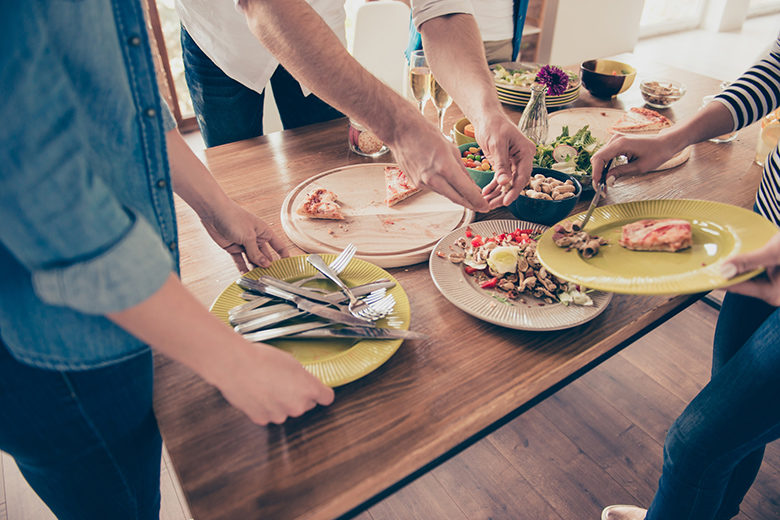
Ready for some shocking news? According to this Natural Resources Defense Council report, 40 percent of all food in America goes uneaten.
This is around 20 pounds of food per person per month. We are now wasting 50 percent more food than in the 1970s, and if we cut losses by just 15 percent we could feed more than 25 million Americans every year while one in six Americans is food-insecure.
The report looked into the inefficiencies of the whole U.S. food system from the farm to the fork to the landfill. And while many of the solutions to food loss involve policy changes and businesses’ cooperation, a lot can be done by reducing food waste in each and every household.
Consider this:
- In an average American household of four, the amount of food that goes to waste is equivalent to $1,350-$2,275 per year.
- An average American consumer discards 10 times as much as an average Southeast Asian.
- American families throw out approximately 25 percent of the food and beverages they buy.
Here is how can you reduce the food waste at home:
Rotate, rotate, rotate.
Learn the basic rule of merchandizing from grocery stores: fresh food goes in the back, not so fresh stays at the front, where it is easily seen. Apply this rule to your pantry and refrigerator every time you come home with groceries and see your food bills and food waste go down.
Know the lingo.
“Use by” and “best by” dates are not regulated. They are nothing more than manufacturer’s suggestions for peak quality. They do not determine when food can be proclaimed unsafe for consumption and discarded. So stop halfway to the trash bin and use your judgment and sense of smell and taste to see whether food can be still enjoyed after the “use by” or “best by” dates.
Use a cheat sheet.
Not sure for how long you can keep food in the refrigerator or freezer after opening? Use one of the reputable cheat sheets to print out and keep on your fridge. I like this comprehensive list from the University of Nebraska. Did you know you can safely keep milk in your fridge for a week and freeze cheese for up to 4-6 months?
Be strategic with leftovers.
Dinner left unfinished? Most leftovers can be safely kept in the fridge for 3-4 days. Reuse dinner leftovers for tomorrow’s lunch, sandwich filling or even breakfast! Whenever we have pizza or pasta for dinner, my kids demand the leftovers for breakfast the next morning. It makes a perfectly balanced, nutritious and, most importantly, eaten morning meal. Just make sure to refrigerate leftovers promptly after the meal (dividing soups and stews into smaller containers helps to cool them down quicker) and reheat them before using to piping hot (165° F).
Love your freezer.
A simple trick that prevents too many leftovers from sitting in your fridge: Cook big batches and freeze all that is left uneaten for a quick meal (or two) when you are in a time crunch. The food needs to be divided into smaller containers, cooled down as soon as possible to prevent bacterial growth and covered with lids to prevent freezer burn. It can be safely kept in the freezer for up to six months and should be thawed overnight in a refrigerator — never on a kitchen counter.
Know how much food you need.
With oversized portions everywhere, it is easy to overestimate how much food you or your family needs per meal. And while appetites vary wildly from one person to another, it is useful to remember this simple rule: 2.5-3 oz. of dry pasta or grains, 4-6 oz. of uncooked vegetables and 6 oz. of raw meat or fish will provide a decent meal for an average person.
Last but not least …
Switch to family-style meals.
Food wasted by kids is often a frustration in many families. But it does not have to be! Family-style meals help save tons of food in my house. Why? Because I do not have to deal with kids’ leftovers on the plates! When food is served family style, in serving dishes in the middle of the table, kids take the amount they want to eat and typically leave their plates empty. Of course, when they were smaller, my kids used to make mistakes in the amounts they estimated appropriate, but with gentle guidance and lots of practice, they were able to learn pretty quickly how to take a small amount first and take more if desired.
As you can see, there many different ways you can cut on food waste at home starting today. Tell me, which have you tried? Are there any that are missing from the list?




